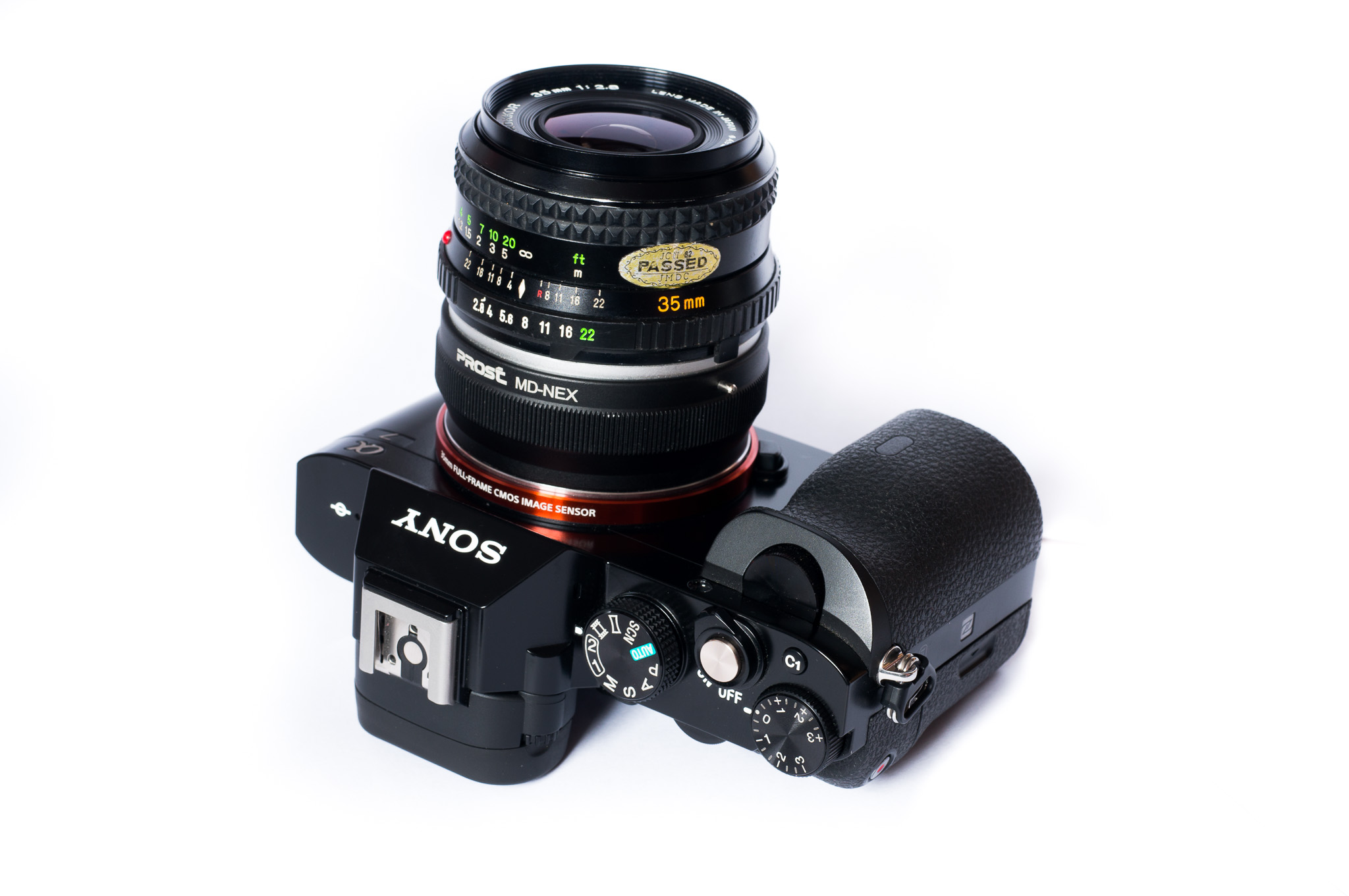
Five years ago I was a broke student and manual lenses were a way for me to get much more creative freedom and image quality for my very limited money. This post is aimed at people just like my 5-years-younger self who have a very limited budget but want to get the most out of it. I think that manual lenses are a smart way to deal with a limited budget since I wouldn’t know another way to get image quality on that level for a similar budget. Sure, manual focus can be a limiting factor for some applications but most people are surprised how far they can get with manual focus.
When I started with manual lenses there was very little reliable information about manual lenses available so I had to spend a lot of time to tell apart the good from the bad lenses. Now 5 years later I have reviewed several dozen lenses and gained a good oversight which I would like to share with you in this artice.
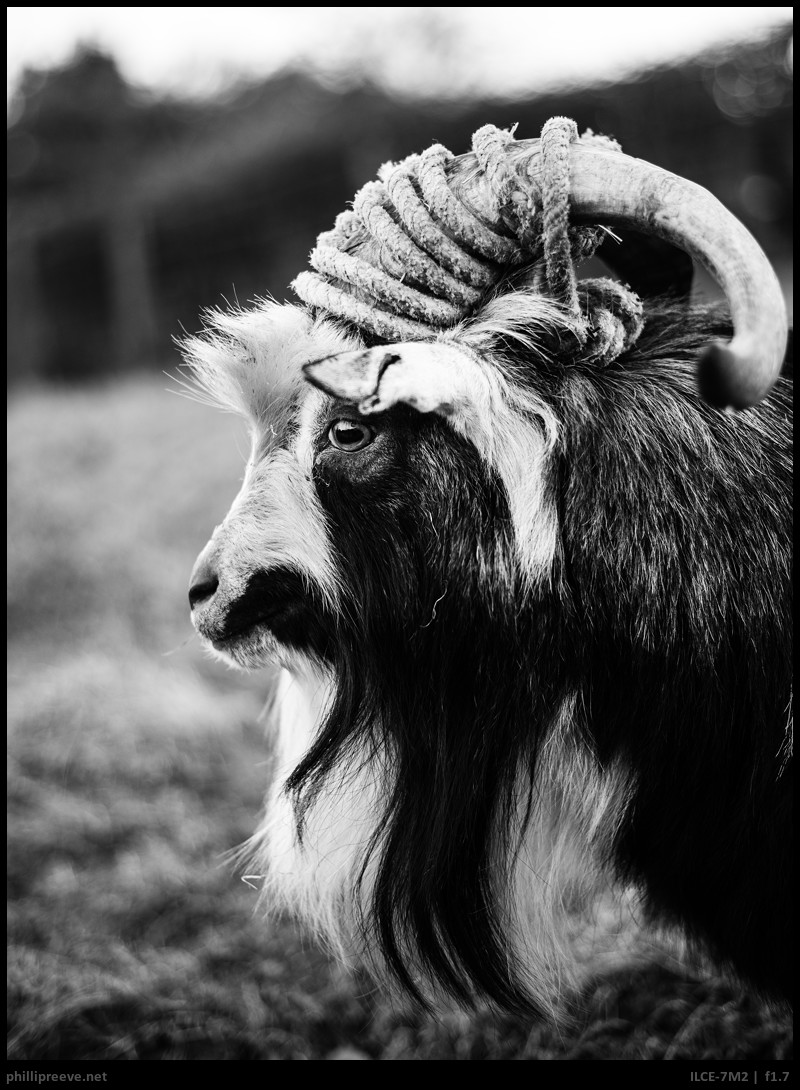
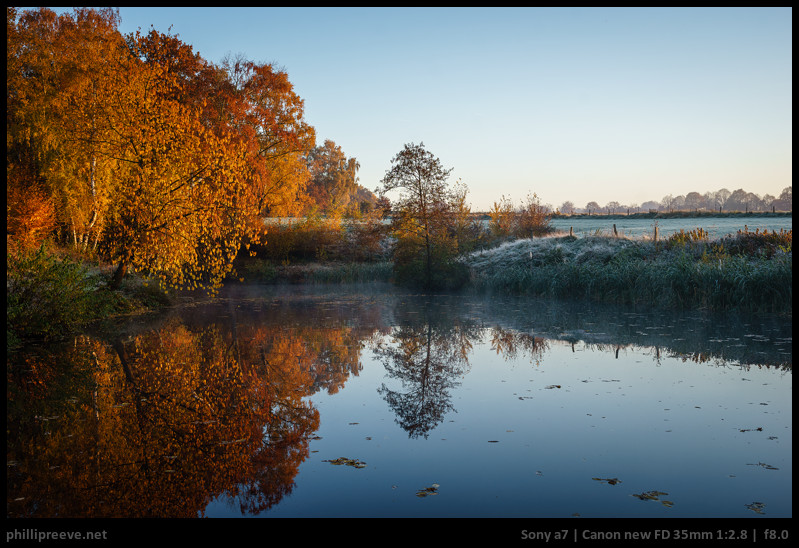
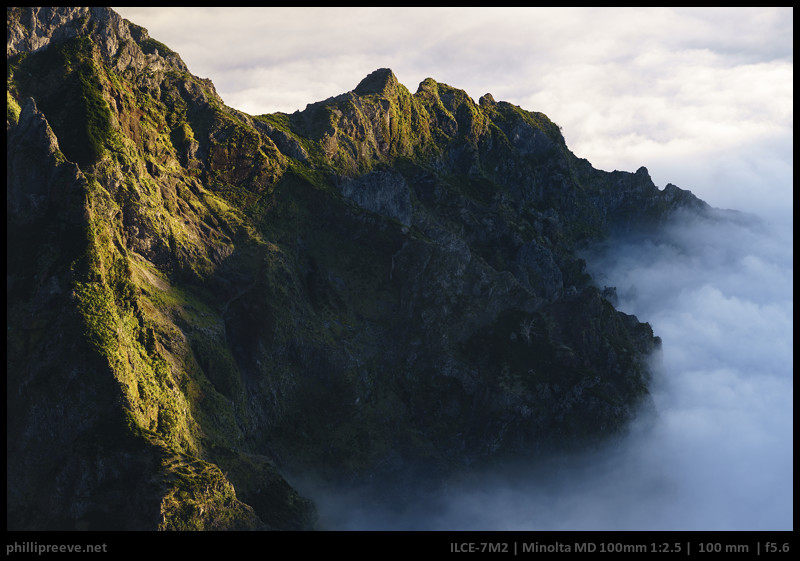
The Kit
Okay, first I will give you a rundown of the System I would recommend and then I will go a bit more into detail and explain my reasoning for suggesting this kit.
- Canon nFD 2.8/24 ($80) – check on ebay*
- K&F Canon FD Adapter ($21) – check on amazon.com*
- Minolta MD 2.8/35 ($60) – check on ebay*
- Minolta MC 1.7/55($35) – check on ebay*
- Minolta MD 2.5/100($140) – check on ebay*
- K&F Minolta MD Adapter ($21) – check on amazon.com*
In total that are less than $400 if you shop with a little patience.
*=affiliate link
The Wide Angle: Canon nFD 2.8/24

24 mm lenses are popular among landscape and reportage photographers because they allow you to include the surroundings in the pictures but they do not overexaggerate the foreground as much as wider lenses often do. They are also signignificantly cheaper than wider lenses. I like the Olympus OM or Minolta plain MD 2.8/24 even more than the Canon because they offer better build quality, but the Canon offers the best value in my eyes.
The Canon nFD 2.8/24 is among the sharpest 24mm lenses I have come across so far and at typical landscape settings it is as sharp as the $1000+ Sony FE 4/16-35. It is also a decent solution for reportage work at wider apertures. The age shows in the weaker coatings which result in a not that great flare resistance and soft corners wide open.
$80 | 240 g | my review | ebay (affiliate link)
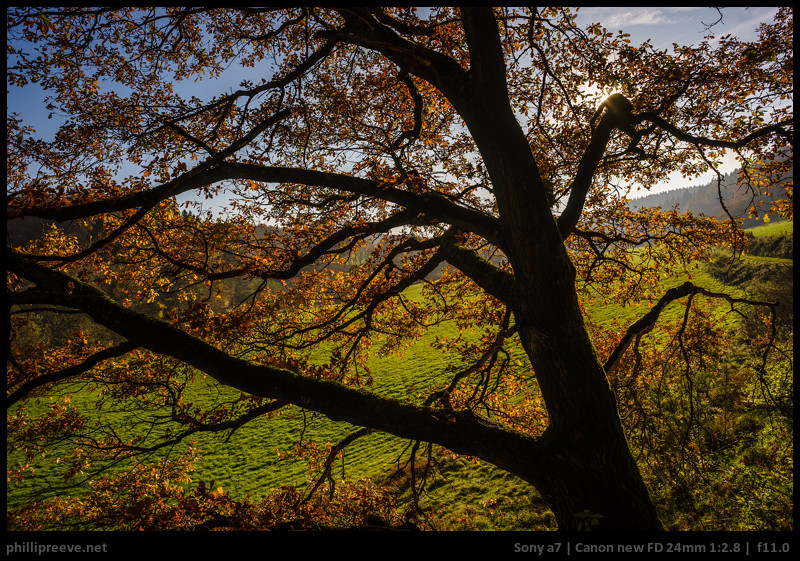
Alternatives
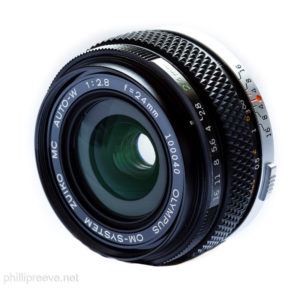
Smaller and with nicer build quality but a bit more expensive. The Canon offers a bit better flare resistance and sharpness is very similar. The Olympus shows stronger vignetting which can be corrected but this takes time.
- Sony FE 2/28: Compared to other E-mount lenses the 2/28 is a bargain but it costs many times as much as the Canon. You get inferior build quality and mushy manual focus but fast AF. The Sony is sharp from f/2 with smooth bokeh and good flare resistance which make it a more versatile lens.
The universal lens: Minolta MD 2.8/35
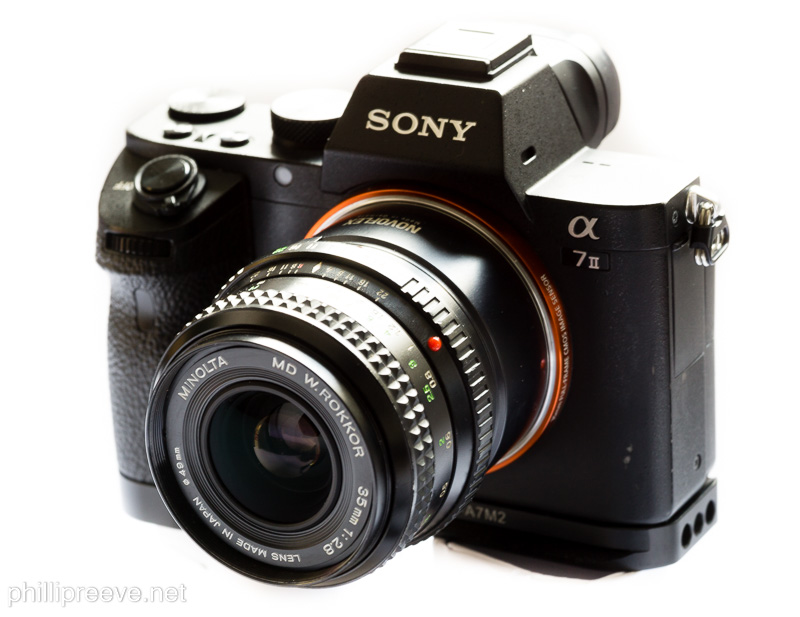
I think 35 mm lenses are the most universal lenses you can buy. If I could have just one lens it would be a 35mm. My all time favorite 35mm is the Voigtlander 1.7/35 but that is a very expensive lens at around $700. The classic 2/35 lenses I have tested so far weren’t that good at f/2 and were outperformed by the smaller and more affordable 2.8/35 lenses at smaller apertures, therefore I would recommend a 2.8/35.
About any manufacturer back in the 70’s made a good 2.8/35 but I think the Minolta MD offers the best value. It is very sharp from f/2.8 and small just like the Canon nFD 2.8/35 but offers better build-quality. Bokeh is good but not great and it isn’t very flare resistant.
$60 | 170 g | ebay (affiliate link)
Alternatives
- Canon nFD 2.8/35: As good optically but the Minolta feels a bit more solid
- Minolta MC 1.8/35: Bigger, at least twice as expensive and more a character lens wide open
- Canon FD 2/35: Probably the best legacy 2/35 with decent f/2 performance but not very smooth bokeh and weak flare resistance.
A normal lens: Minolta MC Rokkor 55mm 1:1.7
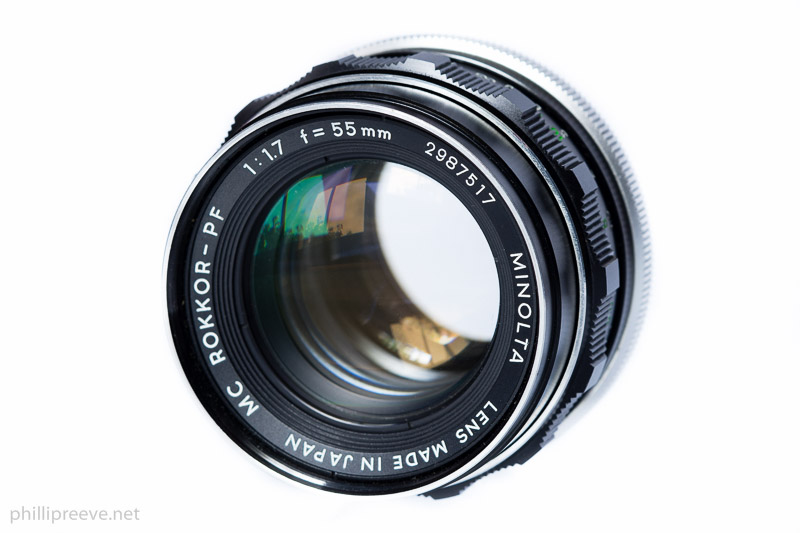
Normal lenses were the kit-lenses of earlier days so you can get them for very little money today. Stopped down the Minolta 1.7/55 performs as well as a modern $1000 lens. Normal lenses are also among the most versatile lenses, you can shoot portrait, landscape, reportage and many other things with them. Some time ago I used nothing but this 1.7/55 for a month and I was surprised how little of a limitation that was.
The Minolta MC 1.7/55 is not the sharpest normal lens but still my favorite of the more affordable ones because it offers better bokeh than most, it is small and it is affordable. Others are sharper but I never hesitate to use it at f/1.7 where it is a bit lower in contrast with moderate sharpness which is still good enough for moderately large prints.
$40 | 230 g | my review | ebay (affiliate link)
Alternatives
- Canon nFD 1.4/50: The sharpest normal lens you can buy for less than $100 but its bokeh is less smooth and build quality isn’t as nice.
- Minolta MD 2/50: An even smaller lens which is technically better but not as well built and the bokeh is significantly less smooth.
- Zeiss C/Y 1.4/50: The Zeiss has better coatings which result in higher contrast and better flare resistance and it is also a bit sharper but you pay for the Zeiss label.
- Sony FE 1.8/50: Sony’s most affordable lens still costs many times as much and is built more like a yoghurt cup. It has more effective modern coatings and higher contrast at wide apertures but it isn’t much sharper than the old Minolta. In fact the Canon linked above is sharper off center at wide apertures. Bokeh is a bit smoother on the Sony. The Sony 1.8/50 has a pretty crude AF drive which is so slow that it isn’t much help either in those scenarios where I can’t follow with manual focus.
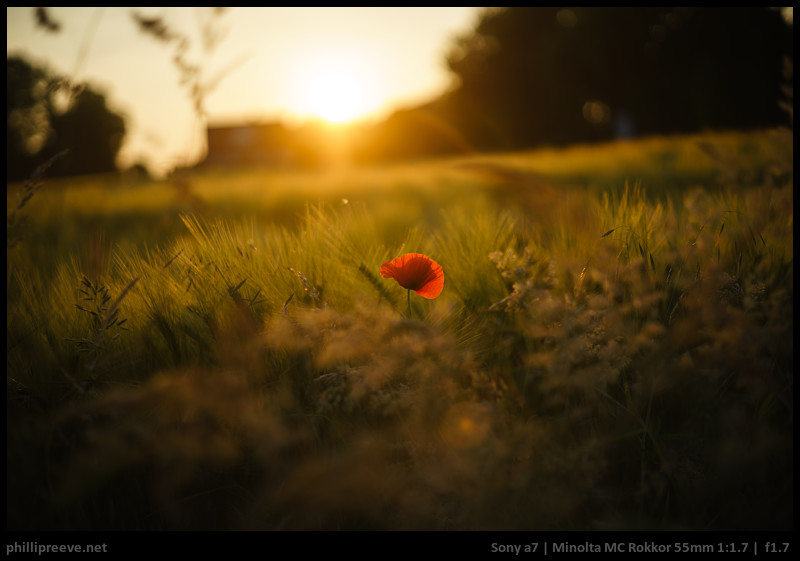
Minolta MD 2.5/100
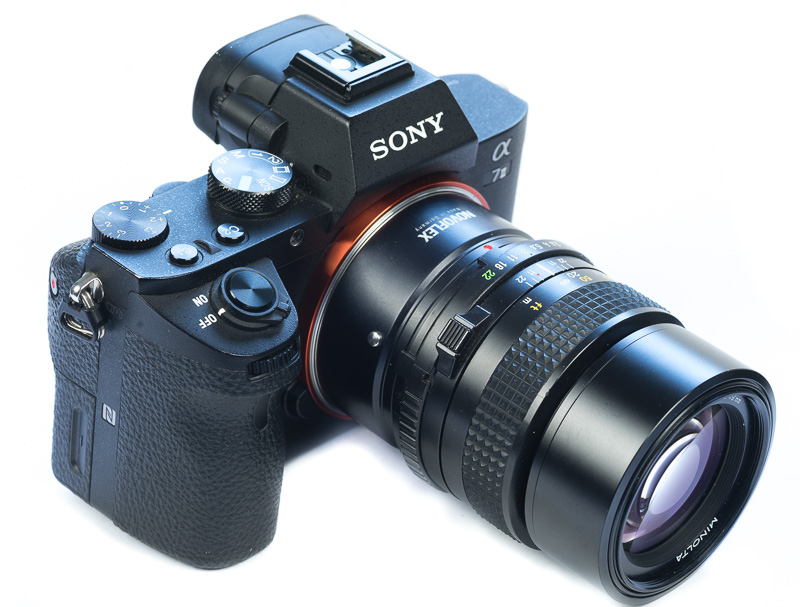
A 85 mm, 100 mm or 135mm lens could be found in most camera bags before zooms became popular. They are often used as portrait lenses but they also perform very well for landscape photography and a number of other uses. Since I don’t know of any 85mm lens which if affordable and performs really well from wide open I prefer a little slower 100 mm lenses which do.
The Minolta MD 2.5/100 is very sharp from wide open with smooth bokeh so it makes for a very nice portrait lens. Stop it down to f/5.6 and its sharpness is top notch across the frame so it work very well for landscape photography as well. Flare resistance and CA correction could be better but few tele lenses are good in this aspect. So I am very happy with the performance but what I like most about the Minolta is that at 310g it is only a little more heavy than most normal lenses.
$110 | 310 g | my review | ebay (affiliate link)
Alternatives
- Olympus OM Zuiko 100mm 1:2.8: Even smaller with a nearly as good performance for a similar price.
- Tokina 2.5/90 Macro: This lens can focus down to 1:2 which makes it more versatile. Bokeh and sharpness are as good or better. It is 200g heavier though and quite a bit more expensive.
- Samyang 2/135: A big and heavy modern manual lens which is one of the best lenses you can buy today. Tack sharp across the frame from f/2 with close to zero CA. While it is surprisingly affordable in comparison to lenses of similar performance it still costs several times as much as the Minolta.
- Sony FE 1.8/85: Many times as expensive it is a stop faster and little sharper with a little higher contrast but I like the Minolta’s bokeh better. AF is fast which can make a difference for subjects like kids.
What this kit can’t do
This is a budget kit and of course you will have to make compromises at this price point.
- No AF: How much of an issue is that? Depending on whom you ask the answers will range from no issue at all to that it is a total dealstopper. So you have to ask yourself what you want to shoot and how manual focus will affect your photography? In my experience for landscape and still life good manual focus lenses are actually be preferable to AF lenses. For portraits of adults manual focus can work well but it is a little slower than AF and requires some practice. For shooting kids you can forget about it.
- Old lenses: I do not only review legacy lenses but also Sony’s pretty expensive native FE lenses. When I compare them against these older lenses on my a7ii the result is usually that the modern expensive lenses have better flare resistance, a little higher contrast and much sharper corners at wider apertures. But in the center the difference in image quality is usually not significant and stopped down the difference can be very small to not noticeable and a legacy $50 can be hard to distinguish from a modern $1500 zoom. Again you have to ask yourself what you shoot and how much of an issue these compromises are for you. I have shot whole holidays with legacy lenses only and I was more than happy with the results, even when I printed them big. While I see some advantages of modern lenses these advantages are rather small in relation to the much higher price you have to pay for those.
What this kit can do
I think this kit will give you a lot of creative freedom for very little money.
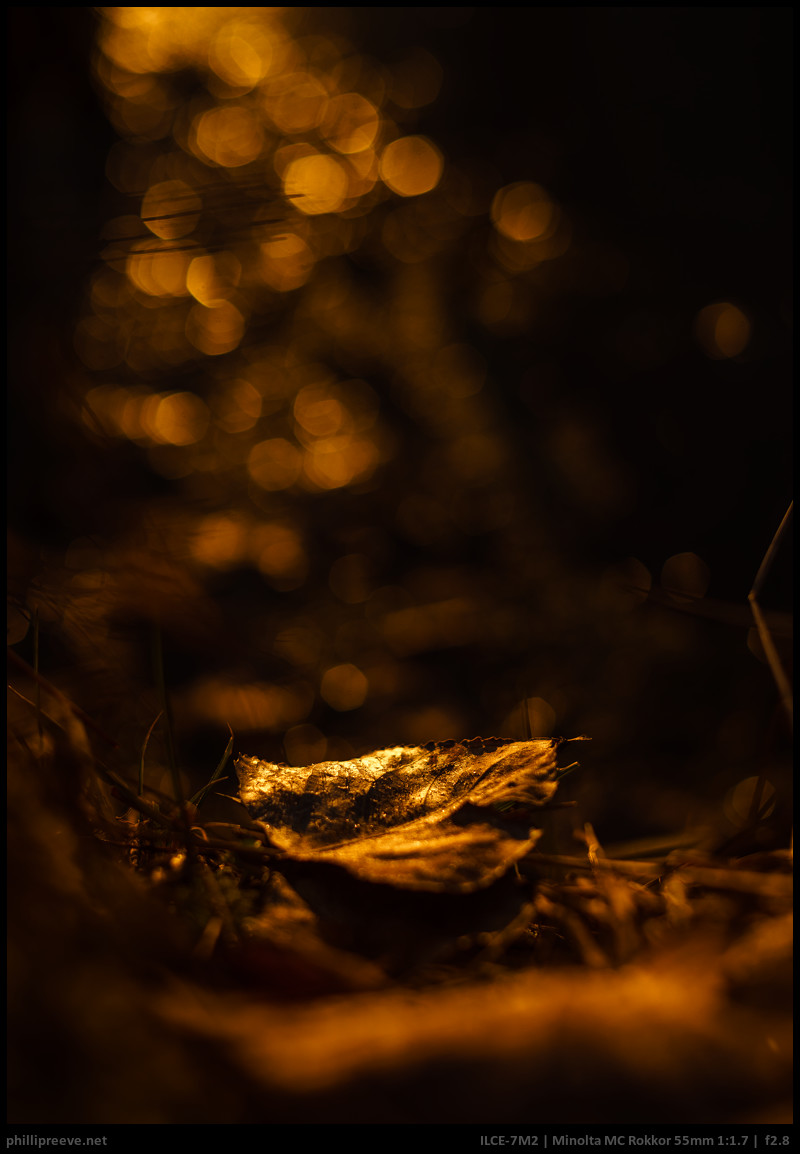
1. Image Quality
This aspect is hard to communicate by text, just have a look at these files and compare them to those out of alternative systems. If you want similar quality out of other systems you have to spend a lot more than a few hundred dollars on lenses.
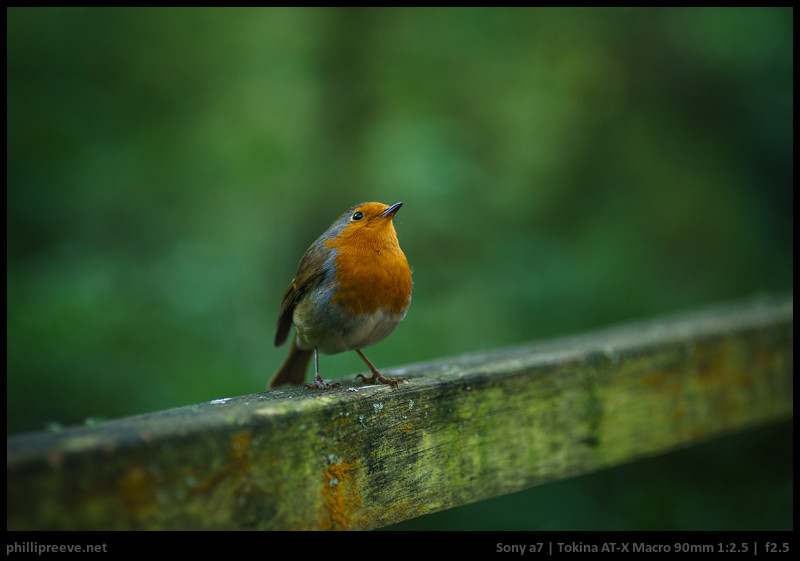
2. Bokeh
Again its relevance depends on what you shoot and on your style but if you want shallow DoF with good bokeh you have to spend a lot for fast lenses in smaller formats. With the Sony you can buy a 1.7/55 which is equivalent to a 1.2/36 in APS-C or 0.9/28 in MFT. The $140 MD 2.5/100 above will give you more separation than a $1600 Panasonic 1.2/42.5. For me shallow DoF is an important creative instrument so FF was the logical consequence.
3. Build Quality
Today even $1000 Sony ZA lenses are made from plastic with just a thin and not very scratch resistant metal hull. The AF motor in the FE55 for example is just glued on and falls of from time to time. Manual lenses in contrast were built to very different standards and a $35 Minolta MC 1.7/55 feels a lot more solid than the 20 times as expensive Sony FE 1.8/55 ZA.
Conclusion
Manual lenses are not for everyone, but if you are on a tight budget they are a great way to get a lot of image quality for very little money. And even if you aren’t they can be a lot of fun. If you are unsure my tip would be to start with one lens like the Minolta MC 1.7/55 which is a $55 investment, adapter included. This will give you the opportunity to get some first hand experience with manual focus. If it works for you: great, a large range of very affordable lenses has opened for you. If manual focus does not work for you you can sell lens and adapter for $45 and start saving for the more expensive AF lenses. So there is a lot to gain and little to lose.
A few more images with affordable manual lenses
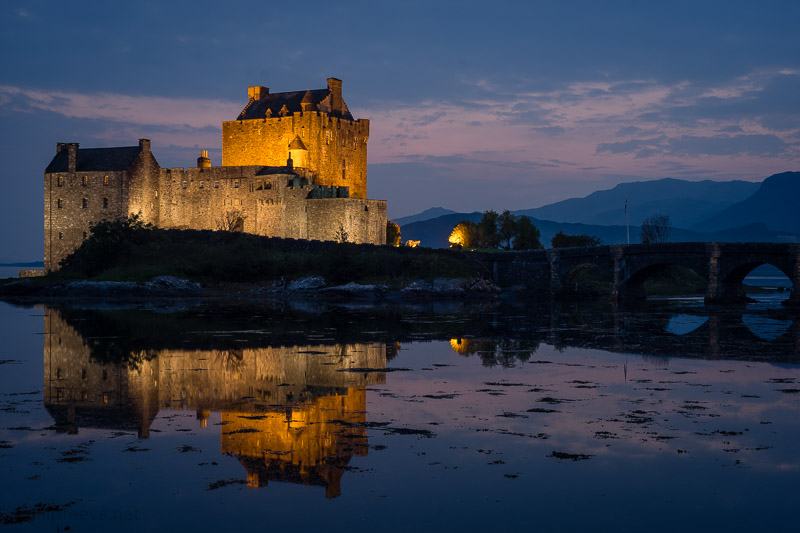

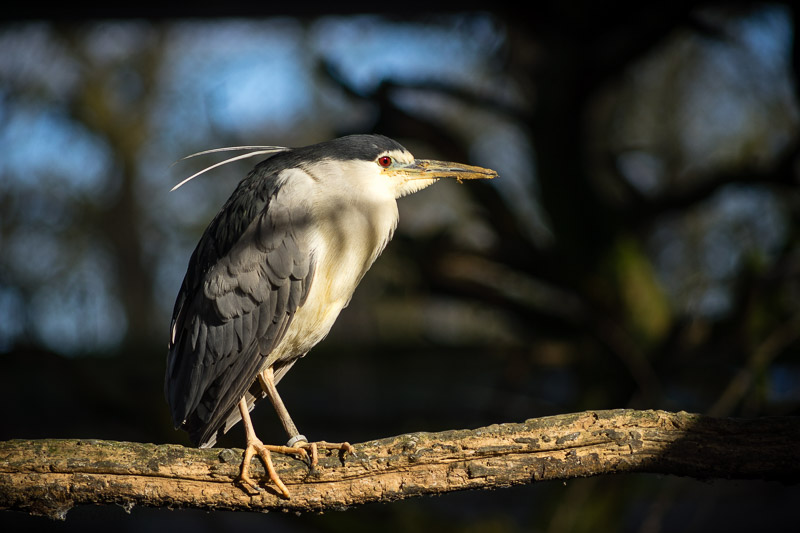
Other articles
- Beginner’s Guide to Manual Lenses on the Sony a7
- Affordable manual lenses for the Sony Alpha 7,7r,7ii,7rii and 7s
- The best lenses below $499 for the Sony a7 series
This site contains affiliate links. If you make a purchase using any of the links marked as affiliate links, I may receive a small commission at no additional cost to you. This helps support the creation of future content.
Latest posts by Phillip Reeve (see all)
- Review: Samyang AF 75/1.8 FE - April 12, 2021
- The FE-List now has 113 lenses on it - March 25, 2021
- 2020 – Year’s end review - December 28, 2020

I just love old mMF lenses. And I still use my Jupiter 8 for portraits. I love the way it render skin tones. 20 dollars 10 years ago 🙂
I started using old MF lenses on Sony A7 when I learnt about the extensive feature that its product design offers a couple of years ago. Having always remembered the colour rendition of the photos I took using CONTAX Zeiss Tessar 2.8/45, I dived into the world of old MF lens photography.
Since then, I have explored various old MF lenses and in doing so, I bumped into your web site, which has always been informative and enjoyable.
Although I do enjoy taking photos using digital AF lenses, especially when travelling, I appreciate the spirit of lens designers from the film camera era. I feel that there is something about pictures old MF lenses render that is beyond the reach of modern digital design.
I hope you will keep up this excellent work for years to come.
PS: How does the clicking of affiliated shop links? I do no see anything on offer I would like to buy on these shops. Does buying anything else support you as long as you go to the shop by following the link from this web site?
Thanks for your support!
If you click an affiliate link and buy anything from a lens to diapers in the following 24 hours I will get a commission.
Great article, thanks! Off the topic of the article, but I’ve always wondered; how do you add your border with photo information? Do you do it in lightroom, photoshop, or something else?
I have a LR plugin for that. Installation is a bit complicated and in German though.
This link is rejected by Google Chrome because the certificate is invalid!
Annoying. Here is the forum thread but it won’t help much if you can’t reach the site to download the plugin :(: https://www.systemkamera-forum.de/topic/100864-vorstellung-lr-tool-zum-sch%C3%A4rfen-rahmen-und-beschriftung/
LR Mogrify does similar things and is what David and I use..
Wondering if you have a recommendation if I want to go wider than 24mm but *not* fisheye?
Canon nFD 2.8/20
Since I’m a broke student I’m really happy with your site! Thanks to the site I discovered manual lenses for my A7s in 2016 , this was really helpful to get a more broad lineup. Via second hand stores I now have a broad lineup of lenses which costed me 5 to 12 euros each. So thank you very much for helping a broke student 🙂
Happy to hear that 🙂
The Nikon 105 2.5 Ai/Ai-S lens is worth mentioning here as an alternative. I hope to see you guys review that lens one day 🙂
one day 😉
I started using old manual focus lenses over 10 years ago because at the time I couldn’t afford anything else and now when I probably could I still continue to use mostly old glass for all the other reasons you mention. My favourites so far are 24/2.8, 35/2.8, 50/2 and 100/2.5, all Minolta plain MD (and also a couple of Minolta zooms, like the 35-70/3.5 and 75-150/4). And of course no list of must have manual focus lenses is complete without including the Helios 44-2. 😉
“If you click an affiliate link and buy anything from a lens to diapers in the following 24 hours I will get a commission.”
Now I know how to support your excellent site and team.
Even if I would only buy second hand diapers for my grandson via your affiliate links!
By the way, the resolution of (very) good manual, still affordable SLR legacy lenses is sufficient for A7r and latest MFT- sensor resolutions / pixel dimensions when applied with resolution-optimal apertures. This is my conclusion employing and thoroughly testing legacy OM-, Zeiss-, Leica-R/M-, and latest MFT-lenses on an A7r resp. some MFT- cameras.
Legacy zooms not considered.
Simple facts: A fast autofocus system (which has of course its benefits) requires a more complicated lens design without improving directly the optical quality. A sophisticated lens construction with its various opto-mechatronic elements increases its cost of materials, production and effective quality assurance. Zoom designs still aggravate the issues.
Your excellent example images demonstrate the usefulness and proven long lifespan reliability of selected legacy glass. Modern, complex lenses have still to show their long-term reliability.
Thanks for the updated list! Your blog got me started on vintage manual lenses and I’ve acquired a nice collection. I agree that it requires some patience to find the lenses at the prices you list – I haven’t found a good deal for a 55mm in good shape yet. I currently use the MD 50mm f/2 for most of my shoots and I usually don’t run into bokeh issues with it. I also have the Canon 35mm 2.8, the Minolta 35mm seems to be getting rare otherwise I’d have one. Finally, I ended up with a MD-III 135mm 3.5 that’s surprisingly very nice for a slower cheap telephoto.
Great review, as always!
Can I ask you why you don’t recommend using these vintage lenses on an APS-C camera?
Because of the lower pixel density results on full frame are better but vintage lenses can work just fine on APS-C.
On the other hand, APSC sensors use only the center (and the best) part of the lenses. So even a not-so-good lens become more attractive
I use a combo made with A7m1 and A6000, with only three lenses plus the 1.5x factor of the APSC I have all the focal lengths I need and cameras with two focal lengths always ready.
Hello and nice to read all this! Great reviews! But what kind of adapter did you used for this lens ‘Canon nFD 2.8/24’ to adapt it on the SonyA7? Thanks!
The one linked at the beginning of the article 🙂
Great choices. I had owned most of the lens you mentioned.
Now I am settled with:
Olympus 24 2.8 MC $145
Canon nFD 35 2.8 $65
Minolta MC 50 1.4 PG $65
Nikon non-AI 100 2.5 P.C. $85
Adapters $10 x4 = $40.
Seems like an OM kit is hard to beat. You can make the price more attractive by swapping the 24mm f2.8 for the 28mm f3.5, also a great lens and super cheap. The main weaknesses of the system seem to be that the 50mm f1.4 is not that great (the f1.8 is probably a better choice) and none of the zooms were terribly good (except the 35-80 f2.8 which is priced well beyond the scope of this article). Add a cheap-as-chips 50mm f3.5 and you’ve got macro covered too. The 200mm and 300mm primes are decent (but not outstanding) and fairly affordable if you really need the reach.
Alternatively a Zeiss Contax 28-85 f3.3-4 and 80-200 f4 get the job done for around $500 if you want a zoom kit. Lots of great options out there… few straight up bad lenses were made by Japanese OEMs in the manual focus era.
The 3.5/28 is super cheap and very sharp but also only single coated which is why I don’t use it often,
Does this list worked with sony a7riii
Yes, they do.
Thanks I’m really confused buying between a7rii & a7riii but this list give me ultimate solution …
And please suggest any one lens solution that fullfill my video work With Af system in most scenario like wedding and traveling videography..
Not my area of expertise, sorry.
Fantastic article! Wondering if the light meter still works with manual lenses…to help determine aperture/shutter speed or is this done completely manually by feel/experience?
Meter works just fine. I use A-mode 95% of the time.
Phillip, great site, keep up to good work !,
Site is a lot about primes which bring good performance and compact solutions but if we were to replace a 4 lens kit with 1 lens only, how would performance be comparatively ? Any experience with a lens like Canon FD 28-85mm f:4 which has macro in addition for example ?
Thanks
It would be worse in many ways.
Hi Phillip,
Your posts are really informative so thanks for writing them! Don’t suppose you could suggest a cheap adaptor for fitting a Zeiss PLanar T 50mm 1,7 lens to a Sony A7?
Sorry if you’ve already covered this elsewhere! Thanks
Check this article
Hi,
I have only the Pentax SMC 50mm 2.0. I mount it on a Micro 4/3 system, and it becomes a 100mm! It is acceptably sharp starting 2.8. But it has some… haze? The blacks are not very black. Yet the bokeh is gorgeous, very slightly swirly, gives this glassy effect which accentuates 3d perception, and has warm colors.
I think some dust crept inside.
I got it for really cheap. It was in perfect condition, even had some papers showing that it was serviced in the 80ies by the original owner.
That is a lot of soul for under $50! Digital plastic lenses don’t get anywhere near that in this department.
I want to get an a7 mainly for the old 35mm glass.
I spotted one that is very cheap but seriously, seriously used.
First, thank you for taking effort to put the test on the MF lenses, I am a amateur myself and I love shooting old mf lenses, besidea they are cheap, o do have the same feeling as you do: I like the process, it brings me joy.
I would also like to mention my favourite lenses are Nikkor 135 /F2.8 AIS, it’s very sharper and rich in color. My other favourite is Nikkor 85/1.8 sharpest lens I used.
I think this article has become and is becoming even more relevant over time as the FF mirrorless bodies are becoming cheaper.
To anyone on a budget that enjoys or wants to get into photography/ post processing (and a little bit into the technical side of gear) I can recommend to look for a used Sony a7m1 that you can get starting at <400EUR. Get a set of manual lenses as described in the article (or other articles on this blog) and you're set up with gear that offers top notch image quality and is very suitable for most types of photography.
I've done just that a few years ago and myself/friends/family have never been happier with my photos.
Funfact: In that time my peers have probably spent the same amount of money on smartphones (with oh so good cameras…) that i was able ot spend on serious photogear, so i'm pretty confident to say that i outsmarted them in a big way.
Kudos to this blog!
Hi there, what an amazing website and so informative, Im 34 years old and shoot professionally, I too use the basic A7 because they are good enough for what I need them for, – Taking photos, I cant afford nor justify the expense for the Sony lenses and am certainly going to go for manual lenses for the future, primes I think.
Thanks for the great reviews and good luck to you.